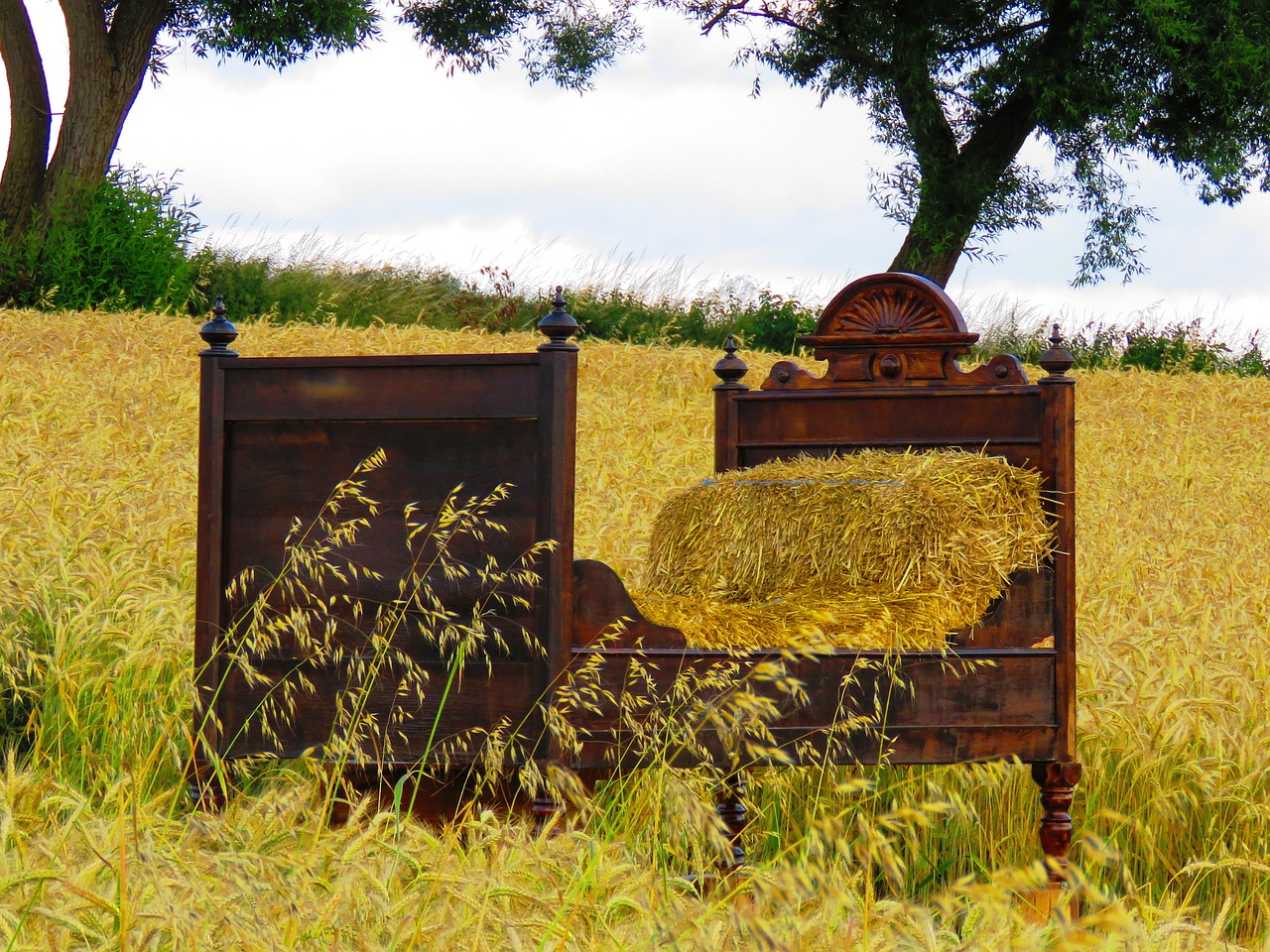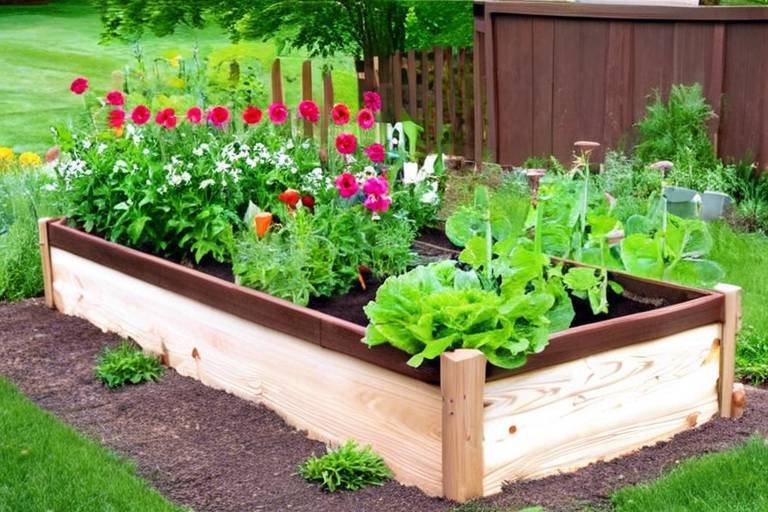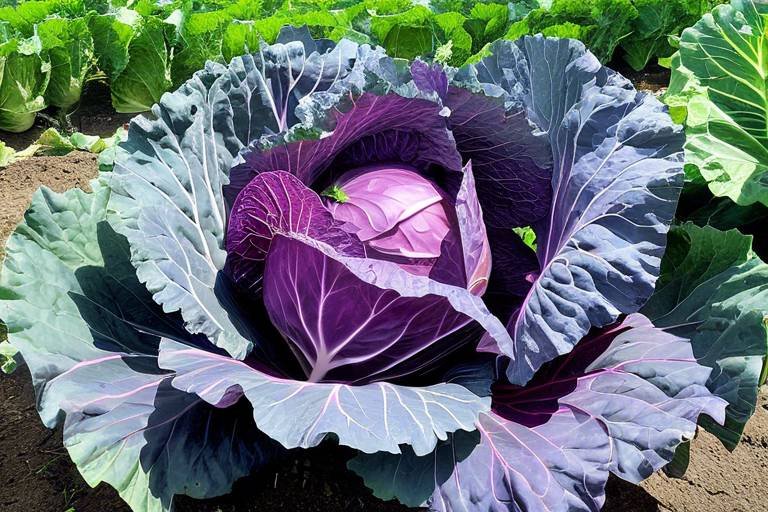How to Grow Flowers in Raised Garden Beds
Growing flowers in raised garden beds can be a rewarding and enjoyable experience for any gardening enthusiast. The elevated structure of raised beds offers a range of benefits that can contribute to the health and vitality of your floral displays. By exploring the advantages of raised garden beds, you can create a flourishing garden that delights the senses and enhances your outdoor space.
One of the key benefits of raised garden beds for growing flowers is the improved drainage they provide. The elevated design allows excess water to drain away more effectively, preventing waterlogging and root rot. Additionally, raised beds help to reduce soil compaction, creating a looser, more aerated growing environment that promotes healthy root development and nutrient uptake.
When it comes to pest control, raised garden beds offer a practical solution for keeping unwanted visitors at bay. The raised height can act as a barrier to some pests, while also making it easier to spot and remove any intruders. This, coupled with the ease of access for planting, weeding, and maintenance, makes raised beds a convenient choice for flower cultivation.
Preparing the soil in raised garden beds is crucial for ensuring optimal flower growth. By carefully selecting the right soil composition and maintaining proper nutrient levels, you can provide your flowers with the essential elements they need to thrive. Paying attention to the pH balance of the soil and incorporating organic matter can further enhance the fertility and structure of the growing medium.
Choosing the right flower varieties for your raised garden beds is a key consideration in creating a vibrant and visually appealing garden. Factors such as sunlight requirements, soil preferences, bloom time, and aesthetic appeal should all be taken into account when selecting plants. By carefully planning your flower choices, you can create a harmonious and balanced display that blooms throughout the season.
Effective watering techniques are essential for maintaining healthy flowers in raised garden beds. Proper irrigation scheduling, avoiding waterlogged conditions, and using mulch for moisture retention can help prevent water stress and promote robust growth. Drip irrigation systems offer a convenient and efficient way to deliver water directly to the roots, ensuring optimal hydration for your plants.
To keep your flowers thriving in raised garden beds, regular maintenance practices are essential. Deadheading spent blooms, controlling weeds, monitoring for pests and diseases, and fertilizing appropriately are all key tasks to ensure the ongoing health and vitality of your floral displays. By staying on top of these maintenance routines, you can enjoy a garden filled with beautiful, blooming flowers.
Companion planting is a valuable strategy for enhancing the growth and health of flowers in raised garden beds. By selecting beneficial plant pairings, you can improve soil health, repel pests, and create a more diverse and resilient garden ecosystem. Companion planting also offers opportunities to create visually interesting combinations that add depth and complexity to your flower beds.
Seasonal care is essential for maintaining flower beds in raised garden beds throughout the year. From spring planting tips to summer watering strategies, fall cleanup practices, and winter protection for perennial flowers, each season presents unique challenges and opportunities for nurturing your garden. By following seasonal care guidelines, you can ensure that your flowers continue to thrive and flourish.
When it comes to designing your flower beds in raised garden beds, creativity knows no bounds. Incorporating color schemes, height variations, texture contrasts, and focal points can help create visually stunning displays that capture the eye and lift the spirits. By experimenting with different design ideas and arrangements, you can infuse your garden with beauty and charm that delights all who behold it.

Benefits of Raised Garden Beds
Raised garden beds offer a plethora of benefits for cultivating flowers that go beyond the traditional ground-level gardening approach. One of the key advantages is the improved drainage that raised beds provide, preventing waterlogging and root rot. Additionally, these beds help in reducing soil compaction, allowing the roots to grow more freely and access nutrients efficiently. The elevated structure also aids in better pest control, as it creates a physical barrier against ground-dwelling pests, such as slugs and snails. Moreover, the raised height of the beds makes it easier for gardeners to access the plants for planting, watering, and maintenance tasks.

Soil Preparation for Flowers
When it comes to growing flowers in raised garden beds, soil preparation plays a crucial role in ensuring the health and vitality of your plants. The first step in soil preparation is to assess the existing soil in your raised bed. It's essential to check the soil composition, nutrient levels, and pH balance to determine if any amendments are needed to create an optimal growing environment for your flowers.
One key aspect of soil preparation for flowers is to ensure that the soil is well-draining to prevent waterlogging, which can lead to root rot and other issues. Adding organic matter such as compost or aged manure can help improve soil structure and drainage while also providing essential nutrients for plant growth. Mixing in perlite or vermiculite can also aid in enhancing soil aeration and drainage.
Another important consideration in soil preparation is maintaining the right pH balance for the specific types of flowers you plan to grow. Some flowers prefer slightly acidic soil, while others thrive in more alkaline conditions. Testing the soil pH and making adjustments as needed can help ensure that your flowers have access to the nutrients they need for healthy growth.
When selecting flowers for your raised garden beds, it's essential to match the soil preferences of the plants with the soil conditions you have created through proper preparation. By understanding the soil composition, drainage, and pH balance of your raised bed, you can choose flower varieties that are well-suited to thrive in that environment, leading to beautiful blooms and healthy plants.

Choosing Flower Varieties
When it comes to choosing flower varieties for your raised garden beds, it's essential to consider several key factors to ensure successful growth and a beautiful garden display. Different flowers have varying sunlight requirements, soil preferences, and bloom times, so selecting the right varieties is crucial for optimal results.
One approach to choosing flower varieties is to consider the sunlight exposure in your garden area. Some flowers thrive in full sun, while others prefer partial shade. By assessing the amount of sunlight your raised garden beds receive throughout the day, you can narrow down your options to flowers that will flourish in those conditions.
Another important aspect to keep in mind is the soil composition of your raised garden beds. Certain flowers prefer well-draining soil, while others thrive in more moisture-retentive conditions. Understanding the soil preferences of different flower species will help you select varieties that are well-suited to the soil environment you can provide.
Consider the bloom time of various flower varieties when planning your garden. By choosing a mix of flowers that bloom at different times throughout the growing season, you can ensure a continuous display of color and beauty in your raised garden beds. This diversity in bloom time also helps support pollinators and beneficial insects that visit your garden.
When deciding on flower varieties, think about the overall aesthetic you want to achieve in your garden. Some flowers offer vibrant hues that can create a bold statement, while others provide subtle shades for a more delicate look. Mixing different flower colors, shapes, and sizes can add visual interest and create a harmonious garden design.
Lastly, don't forget to consider the height and growth habits of the flower varieties you choose. By selecting a combination of tall, medium, and low-growing flowers, you can create depth and dimension in your raised garden beds. Taller flowers can serve as focal points, while shorter varieties can be used as borders or ground covers.
Overall, the key to choosing flower varieties for raised garden beds is to strike a balance between personal preferences, environmental conditions, and design considerations. By selecting a diverse range of flowers that complement each other and suit your garden space, you can create a stunning floral display that brings joy and beauty to your outdoor environment.

Watering Techniques
When it comes to watering flowers in raised garden beds, it's essential to strike a balance between providing adequate moisture and avoiding waterlogged conditions that can harm plant roots. One effective technique is to water deeply but infrequently, allowing the soil to dry out slightly between waterings to promote healthy root development. Mulching around flowers can help retain soil moisture, reduce evaporation, and suppress weed growth, creating a more favorable environment for plants to thrive.
Another useful watering method is the implementation of drip irrigation systems, which deliver water directly to the base of plants, minimizing water waste through evaporation and runoff. Drip irrigation also helps prevent foliage from getting wet, reducing the risk of fungal diseases. By setting up a timer for your drip system, you can ensure consistent and efficient watering, especially during hot and dry periods when flowers require more hydration.
Observing the specific water needs of different flower varieties is crucial for successful gardening in raised beds. Some flowers may prefer drier conditions, while others thrive in consistently moist soil. By grouping plants with similar watering requirements together, you can tailor your watering regimen to meet the needs of each species effectively. Monitoring the moisture level of the soil regularly and adjusting your watering schedule accordingly can help prevent overwatering or underwatering, both of which can stunt plant growth and flowering.
During the summer months, when temperatures soar and evaporation rates increase, it's important to water flowers early in the morning or late in the evening to minimize water loss through evaporation. Avoiding overhead watering methods can also help reduce water waste and prevent the spread of foliar diseases. Additionally, incorporating a layer of organic mulch, such as straw or wood chips, can aid in moisture retention and temperature regulation, creating a more hospitable environment for flowers to thrive even in challenging conditions.

Maintenance Practices
When it comes to maintaining flowers in raised garden beds, there are several key practices that can help ensure the health and beauty of your floral displays. One essential task is deadheading spent blooms regularly to promote continuous flowering and prevent the plant from expending energy on seed production. By removing fading flowers, you encourage the plant to redirect its resources into new growth and blooming.
Controlling weeds is another crucial aspect of maintenance in raised garden beds. Weeds compete with flowers for nutrients, water, and sunlight, potentially stunting their growth and affecting overall health. Regular weeding not only keeps the garden looking tidy but also prevents unwanted plants from overpowering your carefully selected blooms.
Monitoring for pests and diseases is vital in maintaining the well-being of your flowers. Keep an eye out for common garden pests like aphids, snails, and caterpillars, as well as signs of fungal or bacterial infections. Early detection allows for prompt intervention, whether through natural remedies or targeted treatments, to protect your flowers from harm.
Proper fertilization is key to providing flowers in raised garden beds with essential nutrients for robust growth and vibrant blooms. Understanding the specific nutritional needs of your chosen flower varieties can guide you in selecting the right type and timing of fertilizers. Organic options, such as compost or manure, can enrich the soil and support long-term plant health.
Additionally, mulching around flowers can help retain soil moisture, regulate temperature, suppress weed growth, and enhance the overall appearance of the garden bed. Organic mulches like shredded bark or compost not only provide these benefits but also break down over time, enriching the soil with organic matter.
Regularly inspecting your raised garden beds for any signs of stress or nutrient deficiencies allows you to address issues promptly and prevent potential setbacks in flower growth and development. By staying proactive and attentive to the needs of your flowers, you can enjoy a thriving garden bed filled with colorful blooms throughout the growing season.

Companion Planting with Flowers
Companion planting with flowers in raised garden beds is a strategic gardening approach that involves pairing different plant species to benefit one another. By carefully selecting companion plants, you can create a harmonious ecosystem that promotes growth, deters pests, and enhances the overall health of your flower garden. When choosing companion plants for your flowers, consider their compatibility in terms of nutrient needs, growth habits, and pest-repelling properties.
One popular example of companion planting with flowers is pairing marigolds with vegetables like tomatoes. Marigolds release compounds that repel nematodes, harmful microscopic worms that can damage plant roots, making them excellent companions for tomato plants. Additionally, the vibrant blooms of marigolds add a pop of color to the garden, enhancing its visual appeal.
Another beneficial companion plant for flowers in raised garden beds is lavender. Lavender not only attracts pollinators like bees and butterflies with its fragrant blooms but also repels pests such as moths and fleas. Placing lavender near your flower beds can help protect your plants from insect damage while adding a delightful scent to your garden.
Furthermore, planting chives alongside your flowers can act as a natural pest deterrent. Chives emit a strong odor that repels aphids, mites, and other common garden pests, helping to keep your flower garden healthy and pest-free. Additionally, chives are easy to grow and can be harvested for culinary use, providing a dual purpose in your garden.
When practicing companion planting with flowers, it's essential to consider the specific needs and characteristics of each plant species to ensure they complement each other effectively. By incorporating companion plants that offer mutual benefits, you can create a thriving and balanced ecosystem in your raised garden beds, promoting the health and vitality of your flowers.

Seasonal Care for Flower Beds
When it comes to caring for flower beds in raised garden beds, seasonal attention is crucial to ensure the health and vitality of your plants throughout the year. Each season presents unique challenges and opportunities for nurturing your flowers, from planting in the spring to protecting them in the winter.
In the spring, it's time to kickstart your garden by planting new flowers and refreshing the soil. Consider adding a layer of compost to replenish nutrients and promote healthy growth. Spring is also a great time to divide and transplant any overcrowded plants to give them more space to thrive.
As summer approaches, the focus shifts to proper watering techniques to combat the heat and dry conditions. Mulching around your flowers can help retain moisture in the soil and reduce the frequency of watering. Regular deadheading of spent blooms will encourage continuous flowering and maintain a tidy appearance in your garden.
When autumn arrives, it's essential to prepare your flower beds for the colder months ahead. Remove any debris and fallen leaves to prevent the buildup of pests and diseases. Consider planting fall-blooming flowers to keep your garden vibrant as the season changes. Applying a layer of mulch can also help insulate the soil and protect the roots of your plants during winter.
Winter care involves protecting your perennial flowers from frost and freezing temperatures. Consider covering delicate plants with frost cloth or moving potted plants indoors to shield them from harsh weather conditions. It's also a good time to plan and prepare for the upcoming spring season by organizing your gardening tools and supplies.

Creative Design Ideas
When it comes to creating visually stunning flower displays in raised garden beds, incorporating creative design ideas can elevate the overall aesthetic appeal of your garden. One popular approach is to play with color schemes, mixing and matching different flower hues to create vibrant and eye-catching arrangements. Consider using a color wheel as a guide to harmonize shades and create a cohesive look throughout the garden.
Another key aspect of creative design in raised garden beds is playing with height variations. By strategically placing taller flowers at the back of the bed and shorter ones at the front, you can create a sense of depth and dimension in your flower display. This layering technique not only adds visual interest but also ensures that all flowers receive adequate sunlight for optimal growth.
Texture contrasts are also essential in designing flower beds. Combining flowers with different leaf shapes, sizes, and textures can add depth and complexity to the garden. For example, pairing delicate, lacy foliage with bold, broad leaves can create a dynamic visual impact that keeps the garden visually engaging.
Creating focal points within your raised garden beds is another effective design strategy. Choose a standout flower variety or a unique garden ornament as a focal point to draw the eye and create a sense of visual balance. This focal element can serve as a centerpiece that ties the entire flower display together.
Lastly, consider the overall layout and arrangement of flowers in your raised garden beds. Experiment with different planting patterns, such as geometric designs, curved borders, or asymmetrical layouts, to add personality and charm to your garden. Don't be afraid to think outside the box and let your creativity shine through in designing your flower beds.
Frequently Asked Questions
- What are the advantages of using raised garden beds for growing flowers?
Raised garden beds offer benefits such as improved drainage, reduced soil compaction, better pest control, and easier access for planting and maintenance. These advantages contribute to healthier and more vibrant flower growth.
- How should I prepare the soil in raised garden beds for growing flowers?
Soil preparation for flowers in raised garden beds involves considerations like soil composition, nutrient levels, pH balance, and the incorporation of organic matter. Ensuring the soil is well-balanced and rich in nutrients is key to promoting successful flower growth.
- What factors should I consider when choosing flower varieties for raised garden beds?
When selecting flower varieties for raised garden beds, factors such as sunlight requirements, soil preferences, bloom time, and desired aesthetic appeal should be taken into account. Choosing the right flowers tailored to your garden's conditions can lead to beautiful and thriving displays.



















